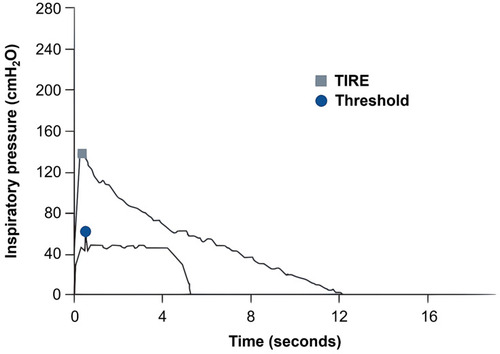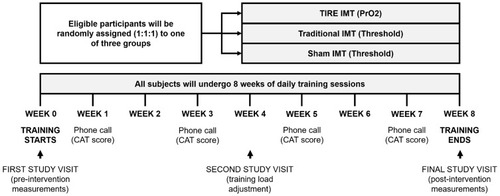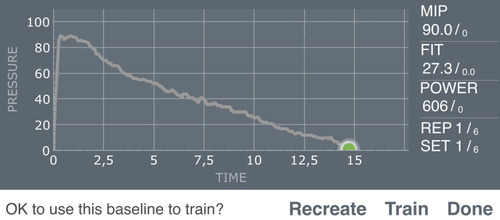Figures & data
Figure 1 Comparison of the maximal inspiratory effort slopes obtained via the TIRE method and traditional inspiratory muscle assessment utilizing a threshold device.

Figure 2 Outline of study design. Subjects are assigned to one of three home-based inspiratory muscle training groups and expected to train for 8 weeks.

Table 1 Proposed Training Characteristics per Study Group

